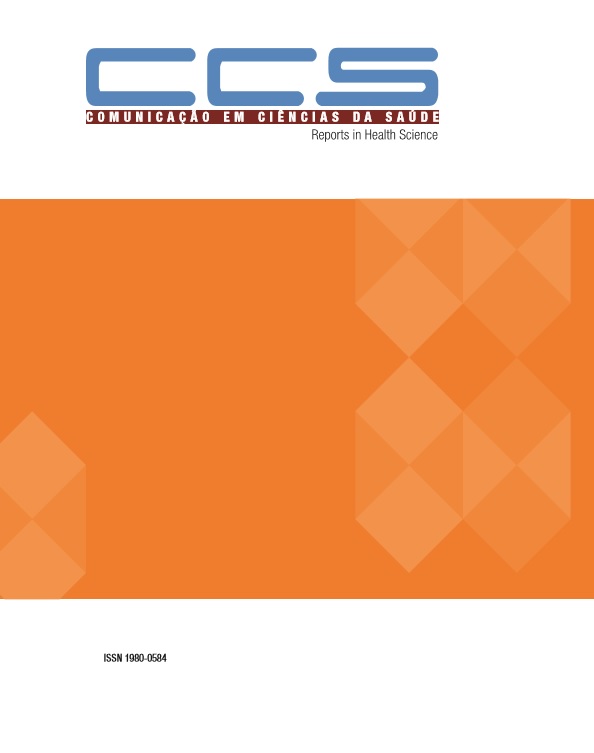Biographical trajectories about body weight changes and overweight of women from Family Allowance Program, Brazil
DOI:
https://doi.org/10.51723/ccs.v28i02.231Keywords:
body weight changes, overweight, obesity, woman, The Family Allowance ProgramAbstract
Objective: to present and discuss results of research on biographical narratives of obese women beneficiaries of the Bolsa Família Program in Brazil.
Method: this is a description of fifty biographical narratives of women with BMI above 30 kg / m2, from the five Brazilian macro regions, using the life history method. The women were identified by the databases of the Food and Nutrition Surveillance System and the Single Register for Social Programs (base year 2015) and the interviews were conducted by telephone.
Results: The construction of the biographical narrative space of the women identified the short stature (median of 1.57m), the predominance of black or brown women (71.6%), born mostly in the northeast region (48.6%), with a mean BMI of 33.9 kg / m2 and a mean weight of 83.0 kg and the linguistic taboos related to the words hunger and obese. In the biographical trajectories, body‑ force and body‑over‑weight constructs were identified. The body‑force internalizes the relations of temporality between the reproductive biological cycles and assumption of the roles of mother and housewife to face the social and economic difficulties of survival. The body‑over‑ weight is an attribution of externality arising from biomedical and aesthetic judgment.
Conclusion: the results can contribute to the advent of new approaches that help the actions of public programs and policies to promote the understanding of the phenomenon of overweight as a historical‑economic and social expression, circumscribed in the biography of the people who live this experience in a country with great social inequalities.
Downloads
References
2. Brasil. Ministério da Saúde. Secretaria de Atenção à Saúde. Departamento de Atenção Básica. Política Nacional de Alimentação e Nutrição. Brasília: Ministério da Saúde; 2012.
3. Ferreira VA, Magalhães R. Obesidade entre os pobres no Brasil: a vulnerabilidade feminina. Ciência & Saúde Coletiva. 2011;16(4):2279‑2287.
4. Kac G. Tendência secular em estatura: uma revisão da literatura. Cad. Saúde Pública. 1999;15(3):451‑461.
5. Mallimaci F, Giménez‑Béliveau V. Historias de vida y método biográfico. Estrategias de Investigación cua‑ litativa. Barcelona: Gedisa; 2006.
6. World Health Organization. Obesity: preventing and managing the global epidemic. Genebra; 1998.
7. Minayo MCS. Hermenêutica‑Dialética como Caminho do Pensamento Social. In: Minayo MCS, Deslandes SF, organizadores. Caminho do pensamento: epistemologia e método. Rio de Janeiro: Editora Fiocruz; 2008. p.83‑108.
8. Merleau‑Ponty M. Fenomenologia da Percepção. 2 ed. São Paulo: Editora Martins Fontes; 1999.
9. Instituto Brasileiro de Geografia e Estatística (IBGE). Pesquisa de Orçamentos Familiares 2008‑2009: Antropometria e estado nutricional de crianças, adolescentes e adultos no Brasil. Rio de Janeiro: IBGE; 2010.
10. Guerios RF, Mansur. Tabus linguísticos. Revista Letras. 1955;3:7‑37.
11. Orsi V. Tabu e preconceito linguístico. ReVEL. 2011;9(12): 334‑348.
12. Brasil. Ministério da Saúde. Secretaria de Atenção à Saúde. Departamento de Atenção Básica.Orientações para a coleta e análise de dadosantropométricos em serviços de saúde: Norma Técnica do Sistema de Vigilância Alimentar e Nutricional ‑ SISVAN. Brasília: Ministério da Saúde; 2011.
13. Institute of Medicine. Nutrition during lactation. Washington, DC: National Academy Press; 1991.
14. Brasil. Ministério do Desenvolvimento Social e Combate à Fome. Secretaria Nacional de Renda de Cidadania. Perfil das pessoas e famílias no Cadastro Único do Governo Federal ‑ 2013. Brasília: Ministério do Desenvolvimento Social e Combate à Fome; 2014.
15. Mariano SA, Carloto CM. Gênero e combate à pobreza: programa bolsa família. Revista Estudos Feministas. 2009; 17(3): 901‑908.
16. Minayo MCS. Saúde Doença: Uma Concepção Popular da Etiologia. Rev. Saúde Pública. 1990;6(3):278‑292.
17. Foucault, M. A hermenêutica do sujeito. 2 ed. São Paulo: Editora Martins Fontes; 2006.
18. Arnaiz‑Gracia M. Comemos lo que somos: reflexio‑ nes sobre o cuerpo, gênero y salud. Barcelona: Icaria Editorial; 2015.
19. Saint Pol T. Le corps désirable. Hommes et fem‑ mes face à leur poids. Paris: Presses universitaires de France; 2010.
20. World Health Organization. Physical status: the use and interpretation of anthropometry. Genebra: WHO Technical Report Series 854; 1995.
Downloads
Published
How to Cite
Issue
Section
License
Declaro para os devidos fins que o artigo que estou submetendo representa um trabalho original e nunca foi publicado total ou parcialmente, e que se alguma de suas partes foi publicada possuímos autorização expressa para a publicação no periódico Comunicação em Ciências da Saúde (CCS). Esse artigo não foi enviado a outro periódico e não o será enquanto estiver sendo considerada sua publicação; caso venha a ser aceito não será publicado em outro periódico; e não contém material difamatório ou ilegal sob nenhuma forma, não viola a intimidade de terceiros, nem infringe direitos protegidos.
Eu e demais autores desse trabalho certificamos por meio desta declaração que:
- Concordamos com as normas editoriais e com o processo de revisão da CCS;
- Aceitamos a responsabilidade pela conduta desse estudo e pela análise e interpretação dos dados;
- Cooperaremos, sempre que solicitado, na obtenção e fornecimento de dados sobre os quais o manuscrito está baseado, para exame dos avaliadores;
- Não estão sendo omitidos quaisquer ligações ou acordos de financiamento entre os autores e companhias ou pessoas que possam ter interesse no material abordado no artigo;
- Não estão sendo excluídos ou omitidos deste artigo autores ou instituições participantes;
- Possuímos permissão para uso de figuras e tabelas publicadas em outras fontes;
- Possuímos permissão das pessoas e instituições citadas nos agradecimentos;
- O autor correspondente autoriza a publicação do endereço informado e e-mail do(s) autor(es) junto com o artigo;
- Assumimos a responsabilidade pela entrega de documentos verídicos;
- Autorizamos a publicação do referido artigo no periódico Comunicação em Ciências da Saúde, segundo critérios próprios e em número e volume a serem definidos pelo editor do periódico;
- Nos comprometemos a atender os prazos estipulados pelos editores do periódico Comunicação em Ciências da saúde;
- Estamos cientes de que a não manifestação no prazo de dois dias da revisão da diagramação, recebida por e-mail, será considerado aprovado para publicação.








